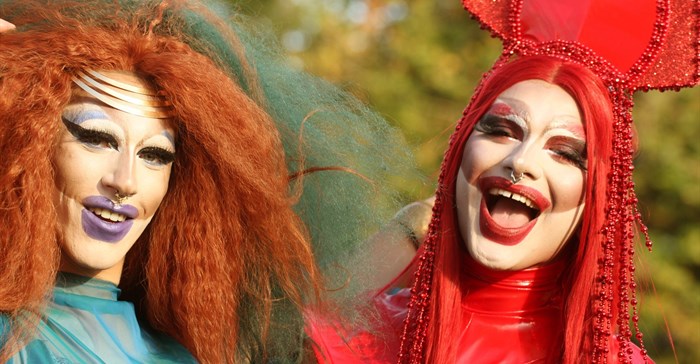






Alongside street culture, drag may be one of the most powerful influences over modern culture. We are seeing and will continue to see its impact across the board, from the critical: employees, office culture, design, consumer desires to the simpler things like, how we say hello to each other.
Perhaps the most significant way in which drag has impacted mainstream society is in the way we speak. Others include the way we look at colour, go beyond ‘make it pretty’ to developing fully-formed concepts and how we use make-up.
The drag lexicon has been widely adopted whether knowingly or unknowingly. Our appreciation for a meme’s unambiguous communication has opened the door to the expressive catchphrases of the drag world.
As memes provided us with the opportunity to communicate succinctly and clearly, so drag queen catchphrases have gripped our imaginations as they do the same thing for our day to day communication. Not all these were invented by queens, but all were popularised by them – ‘Not today Satan’, ‘Yass’, ‘Werq’, ‘Hiieee’, ‘Don’t be shady’, ‘Hallaloo’, ‘All T no Shade’ …
The life that Queens live through their bold, unapologetic use of colour has transformed the aesthetics of young designers who have been entering the workplace over the last 10 years. Clean lines have given way to organic shapes; muted greys and cold colours have been exchanged for screaming acid colours and other bold palettes. The 2019 Met Gala was the first time that queens had been invited to the event. RPDR winners Violet Chachki and Aquaria were there, as was RuPaul … out of drag.
Possibly the most exciting element of drag to enter the design landscape is the idea of ‘making it pretty’ barely registers with the drag artform. Although there are pretty queens out there who focus on ‘passing as a woman’, the queens who really shine have fully-formed concepts, a clear message and execution.
A uniform, airbrushed makeup look has become the new normal. Some call it ‘Instagram makeup’. Some call it a ‘beat’ face. What it really is is decades of quiet, but powerful, influence from the drag community. Drag queens used these techniques to mask their masculine features, emphasising and accentuating femininity, as well as to highlight their conceptual storytelling based make-up. Contouring, for instance, which was created for the stage became a staple technique for drag queens, led to makeup companies designing kits specifically for contouring.
Here are some of the ways that drag will continue to influence our lives in 2019 and beyond:
Design: There’ll continue to be a move away from simple clean lines to focus on bold use of colour, positivity, extravagance, braveness, and storytelling. Conceptual visions for design will become essential if we are to communicate clearly through how we speak through design.
Hiring: Office culture will start changing as Drag starts ingraining itself in the way people speak and you’ll start seeing a change in the attitude of new hires. They’ll be more positive, and more confident, possibly speaking over superiors without fear of reprisal. The office will become louder and more energetic, this will turn some people off, but it will be a positive influence on office culture.
Product design: As the markets flood with new products, your product will need to be more than just a product, design will need to reflect the consumer's own story to facilitate an emotional connection.
Product identity: The consumer has become far more interested in being entertained by the brands that they engage with. This will only become amplified in the coming years as brands will need to exemplify consumers’ own belief systems. They will start buying the product they identify personally with far more than they have done in recent memory. Product quality itself will not be enough to guarantee sales or interest.
